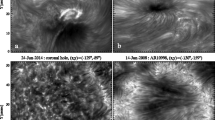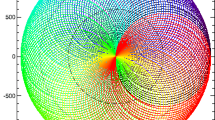Abstract
The Atacama Large Millimeter/submillimeter Array (ALMA) (The Enhanced Atacama Large Millimeter/submillimeter Array (known as ALMA) is an international astronomy facility. ALMA is a partnership between North America, Europe, and Japan/Taiwan, in cooperation with the Republic of Chile, and is funded in Europe by the European Southern Observatory (ESO) and Spain, in North America by the U.S. National Science Foundation (NSF) in cooperation with the National Research Council of Canada (NRC), and in Japan by the National Institutes of Natural Sciences (NINS) in cooperation with the Academia Sinica in Taiwan. ALMA construction and operations are led on behalf of Japan/Taiwan by the National Astronomical Observatory of Japan (NAOJ), on behalf of North America by the National Radio Astronomy Observatory (NRAO), which is managed by Associated Universities, Inc. (AUI), and on behalf of Europe by ESO) combines large collecting area and location on a high dry site to provide it with unparalleled potential for sensitive millimeter/submillimeter spectral line observations. Its wide frequency coverage, superb receivers and flexible spectrometer will ensure that its potential is met. Since the 1999 meeting on ALMA Science (Wootten, ASP Conf. Ser. 235, 2001), the ALMA team has substantially enhanced its capability for line observations. ALMA’s sensitivity increased when Japan joined the project, bringing the 16 antennas of the Atacama Compcat Array (ACA), equivalent to eight additional 12 m telescopes. The first four receiver cartridges for the baseline ALMA (Japan’s entry has brought two additional bands to ALMA’s receiver retinue) have been accepted, with performance above the already-challenging specifications. ALMA’s flexibility has increased with the enhancement of the baseline correlator with additional channels and flexibility, and with the addition of a separate correlator for the ACA. As an example of the increased flexibility, ALMA is now capable of multi-spectral-region and multi-resolution modes. With the former, one might observe e.g. four separate transitions anywhere within a 2 GHz band with a high resolution bandwidth. With the latter, one might simultaneously observe with low spectral resolution over a wide bandwidth and with high spectral resolution over a narrow bandwidth; this mode could be useful for observations of pressure-broadened lines with narrow cores, for example. Several science examples illustrate ALMA’s potential for transforming millimeter and submillimeter astronomy.
Similar content being viewed by others
References
de Breuck, C.: In: Wilson, A. (ed.) Proceedings of the Dusty and Molecular Universe: A Prelude to Herschel and ALMA, Paris, France, 27–29 October 2004, ESA SP-577, p. 27. ISBN 92-9092-855-7. ESA Publications, Noordwijk (2005)
Escoffier, R.P., et al.: Observational modes supported by the ALMA correlator. ALMA Memo No. 566 (2006). http://www.alma.nrao.edu/memos/html-memos/alma556/memo556.pdf
Escoffier, R.P., et al.: Astron. Astrophys. 462, 801 (2007)
McCarthy, M.C., Gottlieb, C.A., Gupta, H., Thaddeus, P.: Astrophys. J. Lett. 652, L141 (2006)
Richer, J.: In: Wilson, A. (ed.) Proceedings of the Dusty and Molecular Universe: A Prelude to Herschel and ALMA, Paris, France, 27–29 October 2004, ESA SP-577, p. 33. ISBN 92-9092-855-7. ESA Publications, Noordwijk (2005)
Wootten, A. (ed.): Science with the Atacama Large Millimeter Array. ASP Conf. Ser., vol. 235 (2001)
Wootten, A., Mangum, J.G., Holdaway, M.: In: Debris Disks and the Formation of Planets. ASP Conf. Ser., vol. 324, p. 277 (2004)
Author information
Authors and Affiliations
Corresponding author
Rights and permissions
About this article
Cite this article
Wootten, A. ALMA capabilities for observations of spectral line emission. Astrophys Space Sci 313, 9–12 (2008). https://doi.org/10.1007/s10509-007-9520-x
Received:
Accepted:
Published:
Issue Date:
DOI: https://doi.org/10.1007/s10509-007-9520-x




